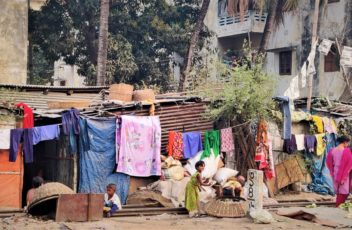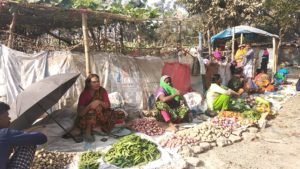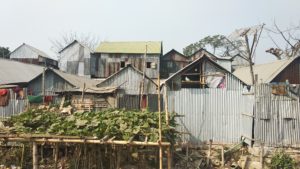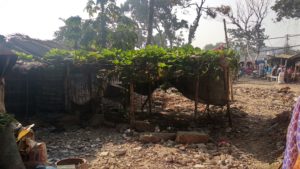The share of the world’s population living in urban areas has been predicted to increase from 55% in 2018 to 60% in 2030 (UN, 2018). Every year people move to the urban areas from villages for various reasons. If we try to see this urban-rural migration under the push-pull model, push factors from rural end such as landlessness and poverty, frequent natural calamities (particularly riverbank erosion, tidal surge), lack of social and cultural opportunities for rural rich and The pull factors from the urban end like job opportunities, higher wages, better civic services encourage these migrants. Most of them are low or lower-middle-income people.
Due to high land prices and construction costs, these people cannot afford suitable housing. In rural areas, they may have a house with a courtyard, pond with lots of greenery. It is very hard to get just a shelter under the roof which is far away from the house they used to live in. A lot of slums and unplanned low-income residential areas with poor greeneries, ventilation boom up. People have little scope to take care of their mental health in such settlements. Most of them face severe mental illness due to some social and physical variables including low socioeconomic status, unemployment, impoverished social networks, quality of life, bad living condition, overcrowding, pollution, and limited social supports overall the environment around these people. These variables of the social and physical environment have different types of effects on different age groups, it also varies from gender to gender.
Different geographical contexts – same issues
In a study in India, it has been explored with ethnographic methods that afflictions of the city affecting the emotional well-being and mental health of women and men with respect to gender in the Malvani slum, Mumbai. Mental health issues such as emotional distress, hopelessness, disappointment, demoralization, addictions, instability, hostility, violence, criminality, worthlessness, fatigue and weakness, depression. Poor hygiene and sanitation, subjective quality of life of poor people living in deprived conditions population density, hutment demolition, homelessness, violence, and crime play a vital role in this degrading mental health in slums of Mumbai.
Women face more problems along with the previously mentioned ones such as dual responsibilities of home and work, substandard jobs and pay, sexual exploitation, marital disharmony, abandonment, exploitation of women, domestic violence, the humiliation of women
which creates a great negative impact like depression, fatigue , worthlessness, stress, low self- esteem from menial position etc.
If we look at South Africa, 72% of women in informal settlements have been reported moderate to high levels of depressive symptomology and 57.9% reported very high levels, compared to only 26.4% of women in a nationally representative sample. A lack of access to water, sewage, garbage collection, health care, and other basic services as factors associated with poor mental and physical health in these settlements. The prevalence of IPV in these communities (66.2%) is higher than in the general population (39%). Even in the slum of Bangladesh, 46% of women in the sample tested positive for a UTI (urinary tract infections) which have not only a physical health problem but also severe mental issues.
Adolescents in the urban slums of Bangladesh face more mental problems than other well-off areas. They may have limited chances to learn skills to shape their minds. Thus, non-slum adolescents may be able to feel anxiety when they face stress, whereas slum adolescents may not be able to learn or practice this
highly cognitive procedure but rather vent their frustrations by acting out as they get older. Here also, quality of life plays a role.
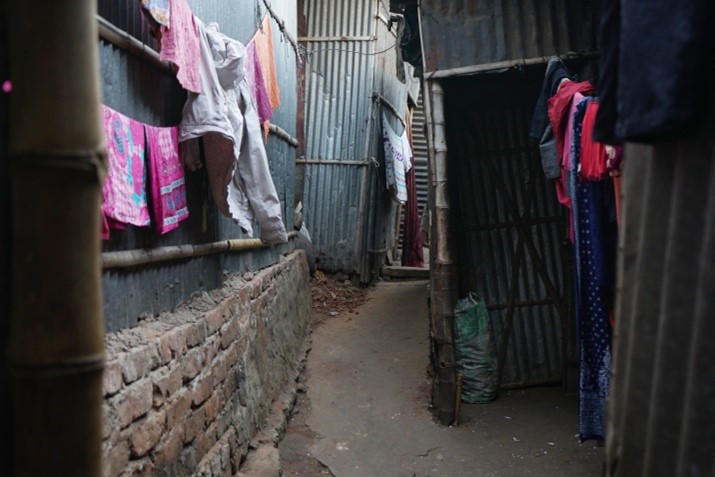
Healthy housing – a human right
Most studies are consistent about that housing condition plays a major role in mental health issues. Lack of adequate space, utility facilities, open space, the hygienic living environment creates a great negative impact on the people living in the slum. Though the constitution of Bangladesh declared housing is a basic right. But proving proper healthy housing to people is a huge challenge for Bangladesh. 80% of poor HHs in Dhaka live in one-roomed homes of the latter types (1.2 m2 floor area per person). From the National Housing Policy of Bangladesh 1993, we come to know that housing is one of the three basic primary needs of human-like food and clothing. It is considered that housing creates a sense of belonging and safety for the owner. Even the major objective of the Housing Policy 1999 was to ensure housing for all. It has put emphasis on the disadvantaged low and middle-income groups of people. Then again the goal of the Housing Policy 2008 was to provide proper housing available to all citizens and to develop houses, settlements, and workplaces on a sustainable and equal basis. The National Housing Authority undertook a project to provide 5,472 flats in Bhashantek. But govt is failing to provide housing to this increasing number of migrants.
RAJUK has reserved only 1.2%, 4.3%, and 7.5% of land for low-income groups in the Purbachal, Uttara (3rd Phase), and Jhilmeel projects respectively. Different NGOs are working to provide housing to this low-income community living in an informal settlement. ARBAN, one of the first NGOs piloted a low-income, urban housing project in Bangladesh. By tapping into micro-credit savings deposits and loan assistance, ARBAN built an apartment complex for 42-member households in Mirpur, Dhaka. The apartments were handed over in 2012. Building on success, ARBAN is taking on another housing project to construct apartments for 85 households on a 1 Bigha plot at the city’s Rampura-Banasree area. “Ghore Fera” or similar kind of rehabilitation opportunities have to be created.
People in our slums are still struggling for a better life…
As we can see there are so many policies but not much really changes for people in slums. They deserve proper housing, a basic healthy life with effective interventions for mental health. Community mental health services should be introduced in these informal settlements. Approaches to mental health policy and planning for community mental health benefit to priorities can be defined with local socio-cultural contexts. So improving and monitoring should also be a concern to the providers to slums. Complimentary approaches to mental health research can also be helpful to address interdisciplinary academic interests and practical needs for mental health planning. Psychiatric epidemiology is required to identify the burden of mental disorders. Quality living may improve their mental health. A housing with better basic facilities such as water sanitation, electricity, open space, basic medical treatment, scopes to talk and getting help about mental health is their right to survive in a good way on this Earth.






